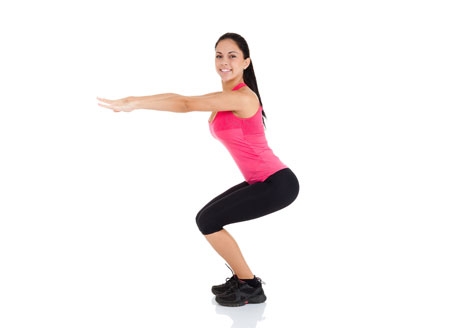It feels as though COVID-19 precautions have led us directly into the cold winter months, and the desire to leave the house to go out into the cold to a potentially germ-ridden gym has all but evaporated. Despite the current circumstances in which we find ourselves, it is just as important as ever to strive to improve your fitness to keep your musculoskeletal system healthy and well. You don’t need a gym membership or fancy equipment to stay active and strong. As you find yourself making resolutions for the long-awaited 2021, perhaps consider resolving to dedicate yourself to a home workout program!
Pushing the coffee table out of the way and donning a good pair of shoes are the only preparations needed to get active in your living room. Home fitness can be as easy as getting up off the couch and marching in place to get your heart rate elevated and your blood pumping to your muscles. From there, you are only limited by your imagination! You don’t need dumbbells to stay strong. Body weight exercises work just as well for maintaining muscle mass to keep your joints working efficiently. If you are feeling particularly ambitious, soup cans can add a little weight to your exercises. If you are willing to spend a little money, small dumbbells and/or exercise bands can amp up your workouts considerably.
If you are feeling overwhelmed as to where to start your home fitness journey, let us guide you. Basic exercises exist that are helpful in strengthening and improving general function of commonly injured joints-the knee and the shoulder. Simple exercises like straight leg raises, wall squats, clam shells, and step downs help strengthen the muscles that support the knee and subsequently prevent injury. Exercises like lateral arm raises, wall push-ups, and internal and external rotations are helpful in strengthening the shoulder musculature, specifically the rotator cuff. A strong rotator cuff will help protect your shoulder from injury. With access to the internet, these exercises (and so much more) can be found online for visual aids and additional instruction. You can find more instruction regarding preventative exercises on our website by hovering over ‘Patient Info’ in the upper right hand corner and then clicking on ‘Rehabilitation.’
Home cardio workouts don’t require an expensive treadmill or bicycle. Just walking or jogging in place or performing calisthenic-type exercises (jumping jacks, for example) will sufficiently increase your heart rate and provide you with all the benefits of fancy equipment. If you are able, taking an extra trip or two (or even three!) up the stairs can increase your heart rate as well. If you are looking to start a new regimen that includes cardiovascular activity, you should discuss with your primary care physician to confirm that it is safe for you to do so.
However you decide to pursue home fitness, don’t forget the warm up and cool down. Preparing the body for activity and cooling down and stretching the muscles afterwards are imperative for injury prevention. Additionally, starting slowly and gradually increasing your repetitions and weight will help prevent aches, pains, and injuries as well. The body does not respond kindly to rapid changes in activity. Stay home, stay healthy, and stay fit! Cheers to 2021!

